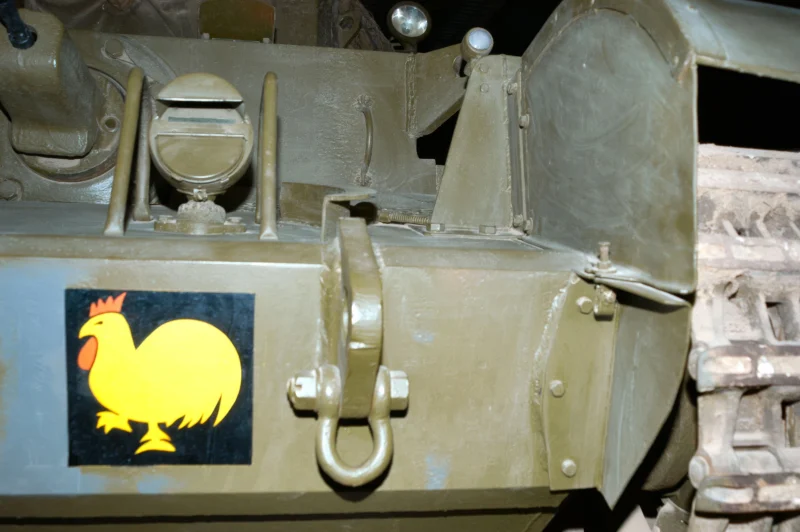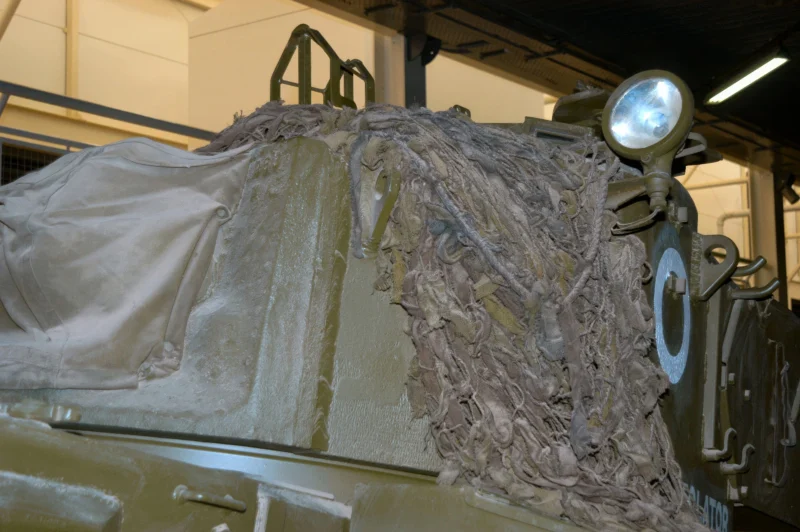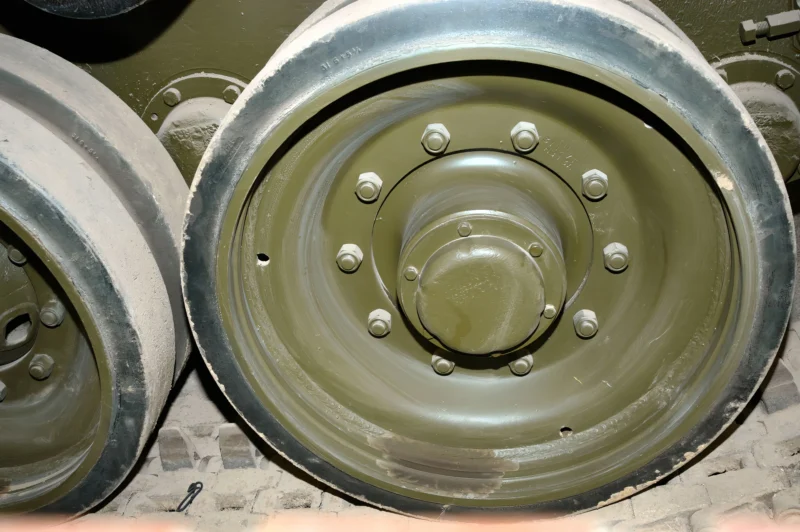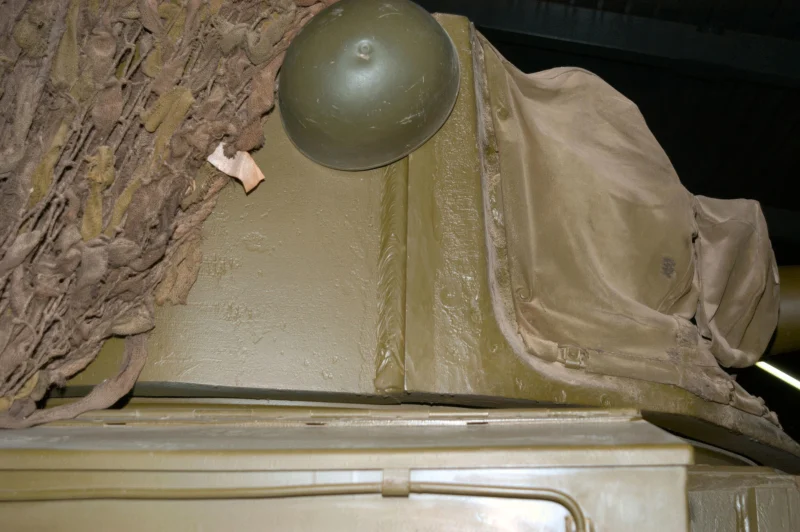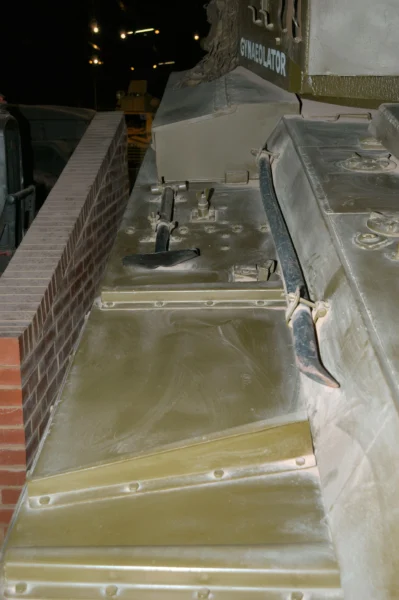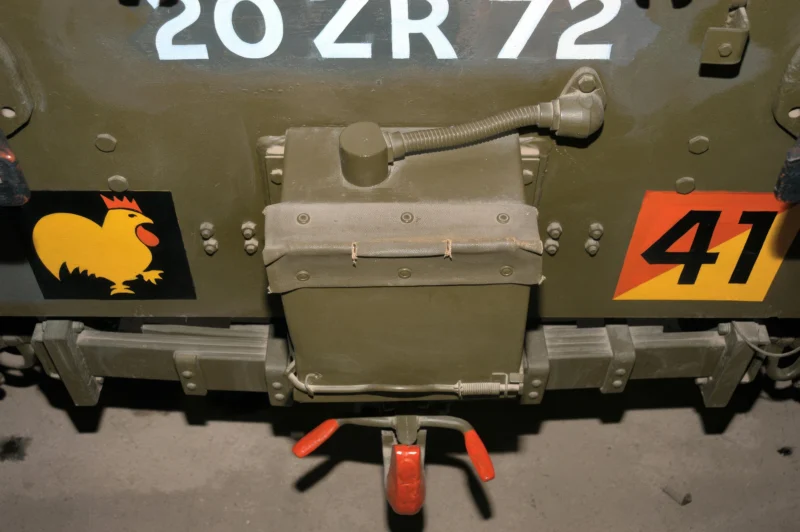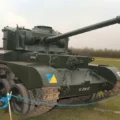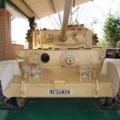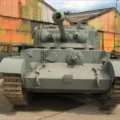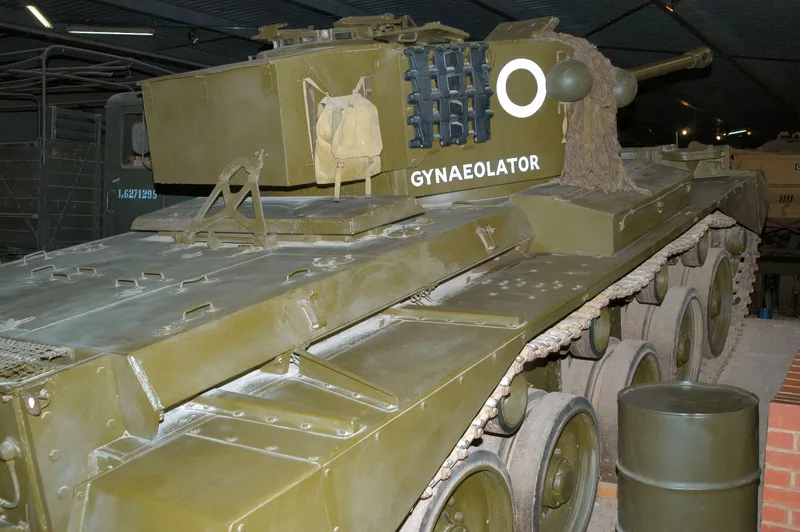
Gynaeolator comète A34 | |
|---|---|
| Paie | Royaume-uni |
| Type | Cruiser Tank |
| Période | Seconde guerre mondiale |
Le Comet (A-34) est un char de combat britannique entré en fonction à la fin de la Seconde Guerre mondiale et utilisé aussi durant la Guerre de Corée.
Source: A34 Comet sur Wikipedia
| A34 Comet Gynaeolator – Walk Around | |
|---|---|
| Photographe | Inconnu |
| Localisation | Inconnu |
| Photos | 21 |
Voir aussi :
Development and Design
Design work on the A34 began in 1943 by Leyland Motors, using the Cromwell tank’s reliable chassis as a base, but incorporating extensive improvements. The goal was to mount a gun firing a projectile derived from the powerful 17-pounder anti-tank gun.
- Main Armament: The Comet’s defining feature was the Ordnance Quick-Firing 77 mm Gun. Despite its name, this gun had a caliber of 76.2 mm; the unique designation was used to prevent confusion with the 17-pounder (which used a longer cartridge case). When firing Armour-Piercing Discarding Sabot (APDS) ammunition, the 77 mm HV (High Velocity) gun was highly effective against the armor of tanks like the Panther.
- Chassis and Engine: It retained the excellent mobility of the Cromwell, powered by the 600 hp Rolls-Royce Meteor V12 engine (a tank version of the Spitfire’s Merlin engine). Its Christie suspension was strengthened, and return rollers were added to reduce the Cromwell’s tendency to throw tracks at high speed.
- Armor and Turret: The tank featured a new, larger, all-welded turret and a hull that was also fully welded, improving crew safety and armor protection compared to earlier designs.
Wartime Service and Legacy
The Comet arrived too late in the war to have a massive impact on the battlefield, but it proved to be a reliable and highly capable design during the final offensives, restoring the reputation of British tank design.
- Combat Debut: The Comet entered active service in December 1944. Its first major action was during the Western Allied invasion of Germany in early 1945, including the Operation Plunder crossing of the Rhine.
- Crew Satisfaction: Crews generally considered the Comet to be the best British tank of the war, providing a much-needed balance of speed, protection, and firepower.
- Successor: More importantly, the Comet served as the crucial interim design leading to the development of the British post-war Main Battle Tank, the legendary Centurion, which directly utilized the Comet’s successful gun and design features.
- Extended Service: The tank remained in British service until 1958 and was exported to several other nations, including Finland, South Africa, and Ireland, where some were used into the 1980s.
Specifications (A34 Comet I)
| Characteristic | Spécification |
|---|---|
| Country of Origin | Royaume-Uni |
| Type | Cruiser Tank |
| Mass (Combat) | 35 long tons (35.5 metric tons) |
| Crew | 5 (Commander, Gunner, Loader/Operator, Driver, Hull Gunner) |
| Armement principal | Ordnance QF 77 mm HV Gun |
| Max Armor Thickness | 102 mm (4.0 in) on turret front |
| moteur | Rolls-Royce Meteor Mark III V12 petrol, 600 hp |
| Max Speed (Road) | 51 km/h (32 mph) |
| Portée opérationnelle | 200 km (123 miles) |
Vues : 1969


